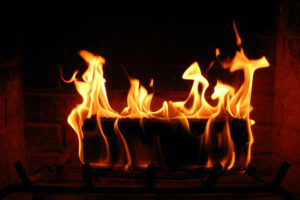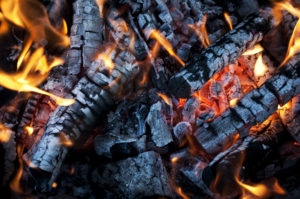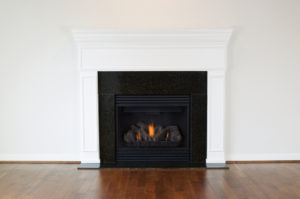We’re entering the time of year where homeowners are using their fireplace less and less. For those with a gas fireplace, this typically means shutting off the pilot light to save on gas and keep energy costs lower throughout the warmer spring and summer months.
That being said, until summer is in full swing, we’re still bound to get some chillier days, along with rain storms and windy weather. On days like these, lighting up your fireplace is the perfect way to relax and stay warm, but if you’ve already turned your pilot light off, you may need a quick refresher on how to get it back on again.
Well, we’re here to help! Mr. Smokestack has all the info you need when it comes to lighting safer, cozier fires year after year. Follow our step-by-step instructions, and please feel free to reach out for any further assistance. We’re happy to help our customers all throughout Raleigh and its surrounding areas!
Step One: Turn Your Fireplace Off & Remove the Cover
First things first, it’s important to ensure your fireplace is turned off. Make sure any switches and controls associated with it are off, and if your model has a thermostat attached to it, set it to the lowest setting possible.
Next, locate the control panel for your pilot light. For most, this should be behind the decorative cover on the bottom of your fireplace. It should be able to open and come off fairly easily, and sometimes you’ll find an instruction set or manual down there that you can also reference in times like these.
Be sure to adhere to your manufacturer’s recommendations throughout this process. Some models advise you to remove the glass cover before proceeding, so look this over to ensure you’re moving forward as safely as possible.
And remember – if at any point you smell gas or feel as though you may have been exposed to carbon monoxide, leave the area immediately. Go outside, ensure everyone is safely out of the home, and make the necessary calls for assistance.
Step Two: Locate the Control Knobs & Gas Valve
Your system should have two knobs – one that reads “On,” “Off,” and “Pilot,” and another that lets you control how high or low your gas is running. Turn the former knob to the “Off” setting to begin. There should be a marker indicating when the knob has reached this setting.
Then, wait for 5 minutes before proceeding further to ensure any remaining gas can clear out. This may also be the point where you remove your glass assembly, if applicable – if the pilot is proving difficult to light, this step can prevent the gas from building up inside of the unit.
Turn the other knob to the lowest setting, then locate your gas valve and turn it so it is parallel to the gas pipe. This means the gas is on and free to enter your fireplace once the pilot knob is turned.
Step Three: Lighting the Pilot
Now you’re ready to light things up! Turn the first knob to “Pilot,” then press it in and hold – this is what allows gas to enter the fireplace area. Next, start pushing the spark igniter, which should be located near the knobs. You may need to push it multiple times before flames appear, especially if you haven’t operated the fireplace in a while.
Once the flames start up, do not release the pilot knob! Keep it pressed in for about 1 minute to ensure everything stays lit. If you release it and the flames go out, repeat the lighting process until you’re successful. At this point, you can reinstall your glass door if you removed it previously.
If the fire stays lit, then you’re okay to turn the knob to the “On” position. This allows a steady flow of gas to enter your fireplace, keeping that pilot light on and ready to go.
Step Four: Enjoy Your Fireplace!
Now, here’s the fun part. Turn your fireplace on and enjoy! You can also adjust the high/low knob to ensure the flames are at the level you would prefer. Then, simply replace the decorative cover, sit back, and relax!
Need Help With Your Gas Appliance? We’re Here for You
There’s no doubting the convenience and efficiency of gas fireplaces are hard to beat. That being said, their ease of use and mess-free functioning can often lead homeowners to assume they don’t need annual inspections or regular care. This isn’t the case! Just like with wood-burning systems, your gas appliances need annual inspections performed by an experienced, reliable sweep.
Why is this? Well, a malfunctioning or improperly installed gas fireplace can cause carbon monoxide – a deadly and hard-to-detect gas – to enter your home, thus putting you and your family at serious risk.
All in all, if you want to operate your fireplace with the ease and peace of mind you deserve, it’s time to rely on our team for it all. We’d love to help you out – call now or reach us online!



